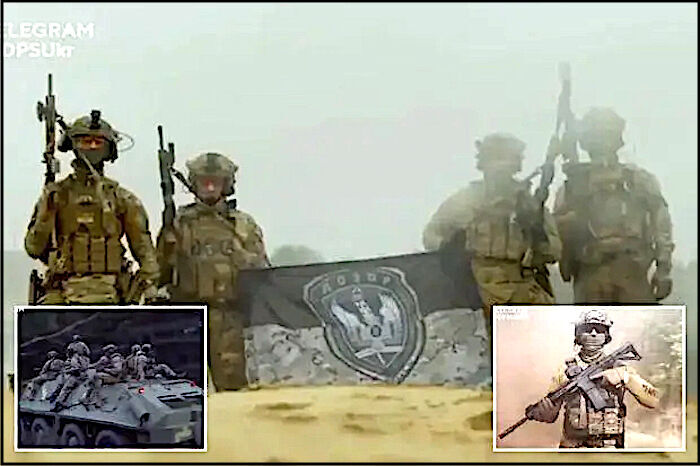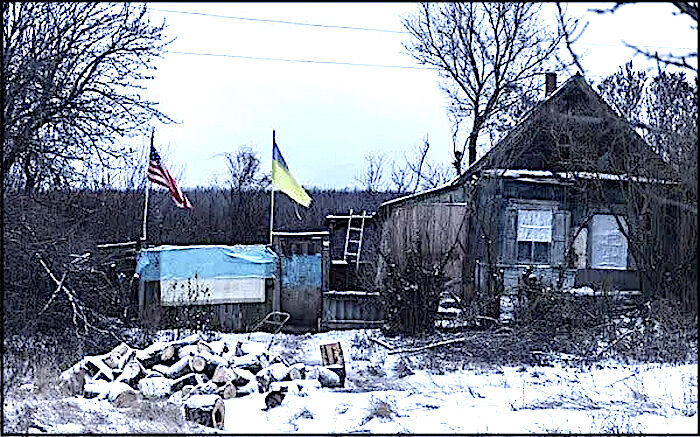The New York Times on February 25 published an explosive story of what purports to be the history of the CIA in Ukraine from the Maidan coup of 2014 to the present. The story, "The Spy War: How the C.I.A. Secretly Helps Ukraine Fight Putin," written by Adam Entous and Michael Schwirtz, is one of initial distrust, but a mutual fear and hatred of Russia that progresses to a relationship so close that Ukraine is now one of the CIA's closest intelligence partners in the world.
At the same time, the Times's publication of the piece, which relied on more than 200 interviews in Ukraine, the U.S., and "several other European countries," raises several questions: Why did the CIA not object to the article's publication, especially coming in one of the Agency's preferred outlets? When the CIA approaches a newspaper to complain about the classified information it contains, the piece is almost always killed or severely edited.
Newspaper publishers are patriots, after all. Right? Was the article published because the CIA wanted the news out there? Perhaps more importantly, was the point of the article to influence the congressional budget deliberations on aid to Ukraine? After all, was the article really just meant to brag about how great the CIA is? Or was it to warn congressional appropriators, "Look how much we've accomplished to confront the Russian bear. You wouldn't really let it all go to waste, would you?"
The Times's article has all the hallmarks of a deep, inside look at a sensitive — possibly classified — subject. It goes in depth into one of the Intelligence Community's Holy of Holies, an intelligence liaison relationship. But in the end, it really is not. It does not tell us anything that every American has not already assumed. Maybe we had not had it spelled out in print before, but we all believed that the CIA was helping Ukraine fight the Russians.
We had already seen reporting that the CIA had "boots on the ground" in Ukraine and that the U.S. government was training Ukrainian special forces and Ukrainian pilots, and was running a shadow war with the Ukrainian intelligence services that involved targeted assassinations, so there is nothing new there.
The article does go a little further in detail from past reports although, again, without providing anything that might endanger sources and methods. For example, we have learned that:
- There is a CIA listening post in the forest along the Russian border, one of 12 "secret" bases the U.S. maintains there. One or more of these posts helped to allegedly prove Russia's involvement in the 2014 downing of Malaysia Airlines Flight 17, although a lot of publicly available evidence suggests that Russia could not have been behind this. The CIA appears to have coyly slipped in disinformation about the Malaysia Airlines flight in this article to remind the Times's readership about how evil the Russians supposedly are.
- Ukrainian intelligence officials helped the Americans "go after" the Russian operatives "who meddled in the 2016 U.S. presidential election." I have a news flash for The New York Times: The Mueller report found that there was no meaningful Russian meddling in the 2016 election. And what does "go after" mean?
- The close ties between Ukrainian intelligence officials and the CIA following the February 2014 Maidan coup were apparent in that the incoming CIA station chief to Kyiv, after a long day of meetings at Langley in the winter of 2015, took General Valeriy Kondratiuk, the head of Ukraine's military intelligence agency, to a Washington Capitals hockey game where they sat in a luxury box and loudly booed Alex Ovechkin, the team's star player from Russia.
- Beginning in 2016, the CIA trained an "elite Ukrainian commando force known as Unit 2245, which captured Russian drones and communications gear so that CIA technicians could reverse-engineer them and crack Moscow's encryption systems."[1] This is exactly what the CIA is supposed to do. Honestly, if the CIA had not been doing this, I would have suggested a class action lawsuit for the American people to get their tax money back.
- Ukraine has turned into an intelligence-gathering hub that has intercepted more Russian communications than the CIA station in Kyiv could initially handle. Again, I would expect nothing less. After all, that is where the war is. So of course communications will be intercepted there. As to the CIA station being overwhelmed, the Times never tells us if that is because the station was a one-man operation at the time or whether it had thousands of employees and was still overwhelmed. It is all about scale.
- CIA-trained commandos participated in clandestine sabotage missions into Crimea and assassination and terrorist acts, like detonation of a car bomb in the vehicle of Donetsk People's Republic commander Arsen Pavlov (aka Motorola) in 2016. The commandos handed out commemorative patches to those involved in Pavlov's murder, one stitched with the British term for an elevator. The article accepts the CIA's claim that it opposed the commission of these violent acts and was infuriated by assassinations.
- CIA Director William Burns made a secret visit to Kyiv recently, his 10th to the region since the Russian invasion in February 2022; CIA officers deployed to Ukrainian military bases reviewed lists of potential Russian targets that the Ukrainians were preparing to strike, comparing the information that the Ukrainians had with U.S. intelligence; and the CIA helped to thwart an assassination plot against Zelensky. In the latter case, the CIA could be making this up to try to make itself look good.

- Lest you think that the CIA and the U.S. government were on the offense in Ukraine, the article makes clear: "Mr. Putin and his advisers misread a critical dynamic. The CIA didn't push its way into Ukraine. U.S. officials were often reluctant to fully engage, fearing that Ukrainian officials could not be trusted, and worrying about provoking the Kremlin."
"Now these intelligence networks are more important than ever, as Russia is on the offensive and Ukraine is more dependent on sabotage and long-range missile strikes that require spies far behind enemy lines. And they are increasingly at risk: "If Republicans in Congress end military funding to Kyiv, the CIA may have to scale back." (Emphasis added.)The authors go on to write that "the question that some Ukrainian intelligence officers are now asking their American counterparts — as Republicans in the House weigh whether to cut off billions of dollars in aid — is whether the C.I.A. will abandon them. 'It happened in Afghanistan before and now it's going to happen in Ukraine,' a senior Ukrainian officer said."
These comments make clear that the CIA leaked the story to the Times as part of a political scheme to try to sustain military aid to Ukraine and boost congressional funding for the CIA.
The article seeks to convey the impression that the CIA is needed now more than ever to prevent Ukraine from becoming another Afghanistan — or Vietnam, where the Ford administration was also accused of abandoning a U.S. ally, and allowing, in that case, the communists to take over.
[1.] The Ukrainian commandos were trained under Operation Goldfish on how to convincingly assume fake personas and steal secrets in Russia and other countries that are adept at rooting out spies and on recruiting sources, and building clandestine and partisan networks. General Kyrylo Budanov, who had deep ties to the CIA, was a rising star in Unit 2245, according to the Times. The Agency had trained him and also taken the extraordinary step of sending him for rehabilitation to Walter Reed National Military Medical Center in Maryland after he was shot in the right arm during fighting in the Donbas. Disguised in Russian uniforms, then-Lt. Col. Budanov led his commandos across a narrow gulf in inflatable speedboats, landing at night in Crimea where they were ambushed by Russian forces.
About the Author:
John Kiriakou was a CIA analyst and case officer from 1990 to 2004.
In December 2007, John was the first U.S. government official to confirm that waterboarding was used to interrogate al-Qaeda prisoners, a practice he described as torture.
Kiriakou was a former senior investigator for the Senate Foreign Relations Committee and a former counter-terrorism consultant. While employed with the CIA, he was involved in critical counter-terrorism missions following the terrorist attacks of September 11, 2001, but refused to be trained in so-called "enhanced interrogation techniques," nor did he ever authorize or engage in such crimes.
After leaving the CIA, Kiriakou appeared on ABC News in an interview with Brian Ross, during which he became the first former CIA officer to confirm the existence of the CIA's torture program. Kiriakou's interview revealed that this practice was not just the result of a few rogue agents, but was official U.S. policy approved at the highest levels of the government.
Kiriakou is the sole CIA agent to go to jail in connection with the U.S. torture program, despite the fact that he never tortured anyone. Rather, he blew the whistle on this horrific wrongdoing.




Reader Comments